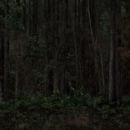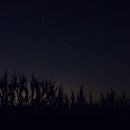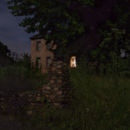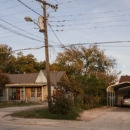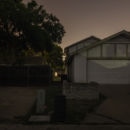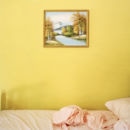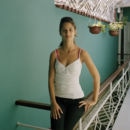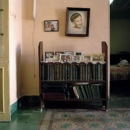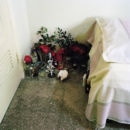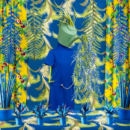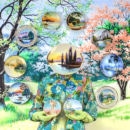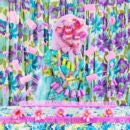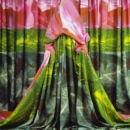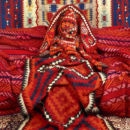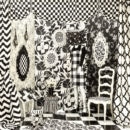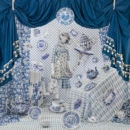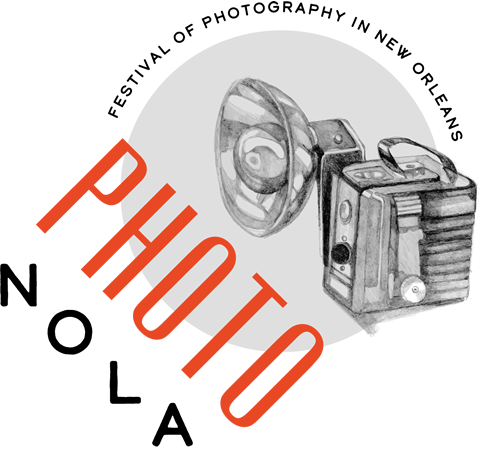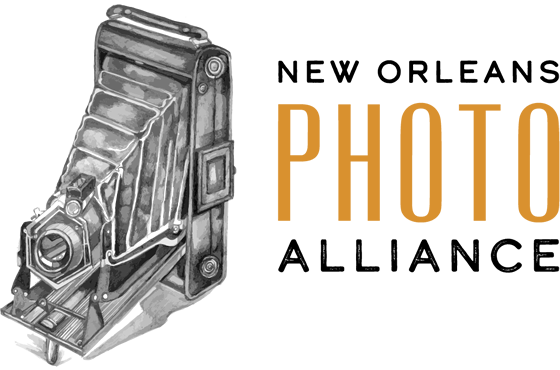After the PhotoNOLA portfolio reviews conclude, each reviewer is asked to name three outstanding projects. The influential editors, curators and gallerists each list their selections, then we tally the votes. Jeanine Michna-Bales, Meg Griffiths, and Patty Carroll were chosen from among the seventy participants in the 2015 PhotoNOLA Portfolio Review.
Jeanine Michna-Bales received the most votes, earning the PhotoNOLA Review Prize, which includes a solo exhibition at the New Orleans Photo Alliance Gallery during the tenth annual PhotoNOLA, a book prize from Edition One valued at $2000, a cash award of $1000, and a marketing consultation with Mary Virginia Swanson. 2nd Place winners, Meg Griffiths, was recognized with a Santa Fe Photographic Workshops gift certificate. 3rd Place winner, Patty Carroll, will recieve a gift certificate from Frame Destination.
Jeanine Michna-Bales
Through Darkness to Light: Seeking Freedom on the Underground Railroad
They left during the middle of the night – often carrying little more than the knowledge that moss grows on the north side of trees. An estimated 100,000 slaves between 1800 and the end of The Civil War chose to embark on this journey out of bondage. They moved in constant fear of being killed or recaptured; then returned and beaten as an example of what would happen to others who might choose to run. Under cover of darkness, ‘fugitives’ traveled roughly 20 miles each night traversing rugged terrain through wind, rain and worse. Occasionally, they were guided from one secret, safe location to the next by an ever-changing, clandestine group known as the Underground Railroad. From a cotton plantation in Louisiana all the way north to Canada, this series of photographs can help us imagine what the long road to freedom may have looked like as seen through the eyes of one individual who made this epic journey, circa 1840s.
The Barnett Shale: A Frack-tured Land
America’s continued dependence on fossil fuels has lead us to a breaking point. With a focus on oil and gas independence from other countries, we have turned to the aggressive process of hydraulic fracturing, or ‘fracking’ as a means to extract oil and natural gas from the earth. The process has been scientifically linked to earthquakes, air and groundwater contamination, health issues in humans and livestock, and dangerous pipeline and well blowouts.
Prior to a series of 10 earthquakes within 24 hours around Halloween of 2008, the Dallas-Ft. Worth area had virtually no earthquakes on record. Since then, the number of quakes and their magnitudes have been increasing at an alarming rate, with over 81, at 1.5+ magnitude, in 2015. The DFW Metroplex sits on top of The Barnett Shale Formation, encompassing 17 counties in Northeast Texas impacting a total population of about 6 million. Texas is no stranger to the oil and gas industry, eventhough only 2% of Texans hold mineral rights. Yet, the Texas State Legislature passed House Bill 40 in May, 2015 – effectively siding with the oil and gas companies against local citizens by overturning a fracking ban in Denton County.
Shale formations lie quietly below most of the Earth’s surface, making this project relevant to everyone. And indeed, 7 other states within the U.S. are dealing with the exact same issues: OK, OH, AL, AR, CO, KS and NM. They too are enduring silent government officials and lack of local media coverage.
My goal for this series is to visually highlight the negative impact of fracking as we currently know it. Because the seismic activity is still being studied, we aren’t fully aware of the ramifications due to this process. However, we know that the oil and gas industry is profit driven. And with wells not producing at their estimated rate, more wells are being drilled to maintain their profit structure—producing substantially more wastewater which is being injected into numerous wastewater wells. Recent scientific research has shown these wells can activate fault lines within a 50 km (30+ miles or so) distance from their location or possibly even further.
BIO
Jeanine Michna-Bales’ work explores the relationships between what has occurred, or is occurring, in our society and how people have chosen to react to those events. She thoroughly researches each topic – considering different viewpoints, causes and effects and political climates – and often incorporates that research into her projects through extended captions, placed text, and/or audio. Whether exploring the darkened stations along the Underground Railroad, long-forgotten nuclear fallout shelters, or the invisible earthquake epicenters of environmental turmoil, she seeks out places that are hidden all around us in plain sight, each with its own story begging to be told and lessons waiting to be shared.
Images from the series ‘Through Darkness to Light: Seeking Freedom on the Underground Railroad’ have appeared in group shows around the United States, including Moving Walls 23: Journeys currently showing at Open Society Foundations in New York, Southern Exposure: Portraits of a Changing Landscape at MOCA | Jacksonville and have been featured in numerous online blogs and publications, including Transition from Harvard University, Geo Histoire, In Sight from The Washington Post, Lenscratch, and Wired Raw File. In 2014, she was named to the Photolucida Critical Mass Top 50. A publication of her Underground Railroad series will be released in February of 2017 from Princeton Architectural Press. And a traveling exhibition of the same body of work will launch at the same time to be shown in various venues across the United States and Canada for five years.
Meg Griffiths
Casa de fruta y pan
I traveled to Cuba for the first time in 2011 to start a project that explores domestic life at the edge of capitalism. The families I stayed with as I traveled across Cuba host tourists in their private homes as a means of income.
After the collapse of the communist bloc in 1989, many families opened their doors to travelers in order to supplement their state-regulated source of earnings. Thus, the casa particular, literally, “private house,” was born. These photographs represent a modest cross-section of Cuban casas particulares throughout the country. They attend to a way of life where the previously private home becomes a business, and moreover, mark a transition from a purely communist country to a hybrid one at a key point in Cuban history—the waning of an outdated political and economic model as well as Castro’s rule over Cuba.
My intentions, as I have returned to Cuba over the past several years, has been to push past preconceived notions and the prescribed experience to gain a fuller and more intimate view of domestic and familial culture. These families have graciously provided a means of entrance into personal, yet public space. Like so many inquiries we must travel inward to come out again with fresh eyes. As Amelia Weinreb so succinctly put it “one must go—as anywhere, but particularly in Cuba—into private space” to re-emerge with new understanding. And I come to find the interior landscape of Cuba is transformed, both figuratively and literally—as am I.
Each image stands to reinforce the heat, love, and power this country has within it. This can be seen and felt in every manifestation, from the vibrating color and light this environment exudes, to the easy self-assured individuals I have come to know, to the food we make and break together. It is shared through the physical transition each home has made over the years, but also a deeply felt sense of movement which seems to permeate even the air. I consume, ingest and ruminate upon these images. They are a means of sharing my personal experience, but serve as a collective expression.
It is my hope that this work engages and disturbs previously held thoughts—adding something new to the on-going conversation of an evolving Cuba. I am convinced that we can unsettle the narratives of life after economic collapse, and the nostalgia of “Old” Cuba—whether under Batista, Castro or any other leader. – Meg Griffiths
BIO
Meg Griffiths was born in Bloomington, Indiana and raised in Houston, Texas. She received two B.A.’s from the University of Texas in Cultural Anthropology and English Literature and earned her Master of Fine Arts from Savannah College of Art and Design. She currently lives in Columbia, South Carolina where she is an adjunct
professor of photography in the School of Visual Art and Design at the University of South Carolina.
Her work has been shown in multiple venues around country, including: Columbia Museum of Art, Center for Fine Art Photography, Museum of Living Artists in San Diego, Center for Fine Art Photography, 701 Center for Contemporary Art in Columbia, Griffin Museum in Boston, Carte Blanche Gallery and Rayko Gallery in San Francisco, and Houston Center for Photography. She has also been published in Aint Bad Magazine, Oxford American, Light Leaked, Boston Globe, Photo District News, South X Southeast Magazine, Lenscratch, Le Journal de la Photographie, and Fraction Magazine. Her work is a part of many private collections as well as the Museum of Fine Art, Houston as well as the Center for Fine Art Photography, Ft Collins, Colorado.
She was honored as one of PDN 30’s 2013: New and Emerging Photographers, named one of eight Emerging Photographers of the South by Blue Spiral 1 Gallery in Asheville, North Carolina in 2014, published her first monograph, Casa de fruta y pan, with AB Editions in November 2015.
Patty Carroll
Anonymous Women: Reconstructed
The subject is the conflation of woman and home.
In the “Anonymous Women: Draped” photographic series, the woman is hidden within the drapery, where she performs domestic trickery. The photographs are vignettes of women hidden behind drapes containing one figure and drapery, with an occasional prop or piece of furniture. In the ensuing series, “Reconstructed,” the woman becomes part of her domestic trappings and activities. I am creating narrative, full size, still-life images comprised of many objects. The space and stories are suspect, inviting hilarity and pathos about our relationship with “things.” The photographs act as commentary on obsession with collecting, accumulating designing and decorating. They are life size installations made in the studio for the camera that play with space and scale, and use household objects as subject matter. The woman (or mannequin) is camouflaged among her domestic objects in the substitute home space. The final outcome is a photograph and/or a short video.
Growing up in the suburbs of Chicago provided the basis of all of my work, and I continually seek to come to terms with it. I grew up when suburban life was idealized; the home was a place of perfection and harmony, free from harsh realities of the city, without crime, or messy interiors, where everyone’s drapes and sofa matched, where people were normal, without dark little secrets. It was at time when the “woman’s place was in the home.” I am photographically creating worlds that debunk, critique and satirize these myths of claustrophobic perfection.
BIO
Patty Carroll for many years taught photography and was Adjunct Full Professor Photography at SAIC until 2014. As an Adobe Instructor in Photoshop, she does Photoshop training at Ascend Training, Chicago. Education includes BFA in Graphic Design, University of Illinois, and MS in Photography, Institute of Design, IIT. Grants/Prizes include 2003 Artist Fellowship, Illinois Arts Council, 2011 Art Takes Miami, Photography Category, 2014 Photolucida Critical Mass: Top 50.
One person museum exhibits include: Museum of Contemporary Photography, Chicago, Art Institute of Chicago, Royal Photographic Society, Bath, England, State of Illinois Gallery and Museum, Blue Star Art Space, San Antonio, TX, White Box Museum, Beijing, China, Northern Illinois University Art Museum, Chicago Cultural Center. Authored/Photographed books: Spirited Visions, Culture is Everywhere, Living the Life: The World of Elvis Tribute Artists, Man Bites Dog: The Culture of Hot Dogs in America, and a monograph of Anonymous Women, to be published by Daylight Books, 2016. Artist Residences include: Akiyoshidai Arts Village, Japan, Anderson Ranch, Colorado, Texas A&M University, Columbia College, Chicago, and currently at Studios Inc, Kansas City, MO. Her work is included in many public and private collections.

